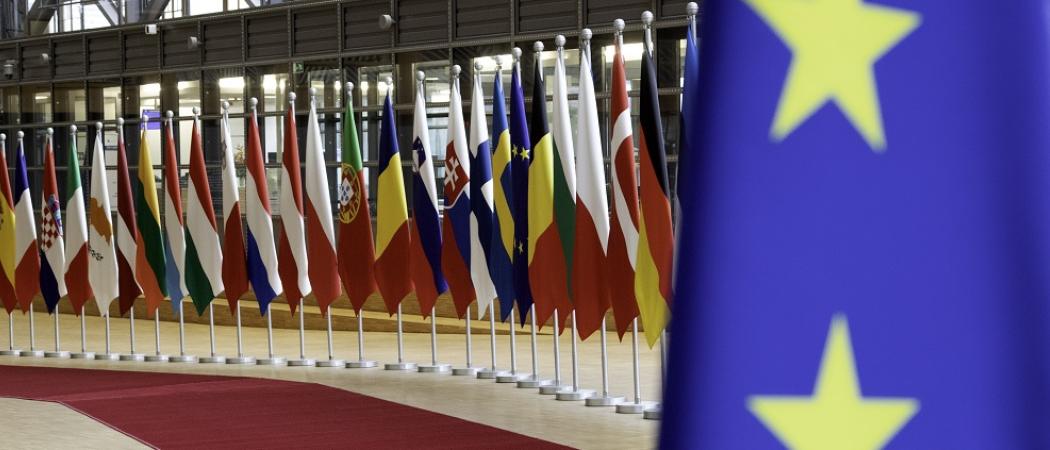Horizon Europe research partnerships in health, climate and digital technologies are ready to launch after months in the Brussels pipeline

Photo: European Union
A €22 billion cluster of big research partnerships involving the European Commission, industry and member states is set to get off the ground in the coming weeks, after member states greenlighted new regulation.
The partnerships are a key part of the European Union’s industrial and R&D strategies – aimed partly at making digital, energy, health and other R&D-intensive industries more competitive globally. As part of the Horizon Europe R&D programme, they generally have bigger budgets and clearer objectives than preceding efforts in the old Horizon 2020 programme.
But due to political wrangling about money and priorities, they are getting started much later than planned. The Commission proposed them in February, and member states struck a deal on the partnerships in September - but then had to wait for the Parliament to clear the way before officially adopting the regulation. Now, the Slovenian presidency of the Council has taken the final step, allowing the so-called joint undertakings to launch.
Industry is happy the wait is over. “The discussions were long and not easy, but we are glad that the Council has adopted the Horizon Europe Joint Undertakings before the end of the year,” said Cecilia Bonefeld-Dahl, director general of Digital Europe, in a statement.
She added: “However, we will breathe a sigh of relief only when the [regulation] enters into force (expected by the end of the month), so that the nine joint undertakings can actually convene their first governing boards, and launch the first calls as soon as possible. Otherwise, both the 2021 budget and the implementation of the programmes might be jeopardised.”
A tenth partnership, on metrology or measurement standards, was also cleared for action alongside the industrial ventures. But the battling over partnerships continues in other domains. For instance, European space executives have expressed dismay at plans to cut back the budget for their planned public-private partnership. More generally, this and other partnerships have come under political fire for giving industry too much say over how the EU money will be spent.
Among those ventures approved this week, the hydrogen partnership, intended to develop hydrogen as a green energy source to help mitigate climate change, is hoping to open its first calls for grant applications in the first three months of 2022, after it sets up its advisory body. “I know the research institutes and industry are waiting with their ideas to start working on these innovations,” Bart Biebuyck, executive director of the previous partnership under the old Horizon 2020 programme, the Fuel Cells and Hydrogen Joint Undertaking, told Science|Business.
But hydrogen innovation has not been standing still while the industry waited for the funding to start flowing. “In the past year, a lot of member states saw why we need more R&I in hydrogen and they started national programmes for hydrogen. Now, the European ones will accelerate progress,” said Biebuyck.
The German Foundation for World Population in particular welcomed the agreement on the Global Health partnership in Sub-Saharan Africa, but raised concerns about UK and Swiss participation in the initiative. “One important question that remains for this and other partnerships is the role the UK and Switzerland will play,” said Lisa Goerlitz, head of DSW’s Brussels office. “Global health challenges such as infectious diseases can only be tackled through collaboration."
These are the nine industrial partnerships, plus the metrology venture:
Key Digital Technologies. The partnership will push for Europe’s strategic autonomy in electronic component production. It describes its goal as “doubling the value of the design and production of electronic components and systems in Europe by 2030.” The Commission, industry and 29 European countries have signed up to invest a total of more than €6 billion in the endeavour, including €2.5 billion from industry.
Clean Aviation. One of the biggest and most ambitious undertakings of the bunch, it will aim to develop the aircrafts of the future, aiming to decrease net emissions of greenhouse gases by at least 30% by 2030 compared with 2020 state-of-the-art aviation technologies. The ultimate goal is to pave the way for carbon-neutral aviation by 2050. The Commission will contribute €1.7 billion next to €2.4 billion from industry.
Clean Hydrogen. The research component of the EU’s plans for hydrogen, the partnership will fund projects making clean hydrogen a viable energy alternative along the entire technology readiness scale. It builds on a previous partnership and aims to take green hydrogen electrolysers from the megawatt to the gigawatt scale. There’s €2 billion in the funding pot. “The goal is to reduce the cost of the technology and make it more commercially-viable, and to contribute to the Green Deal,” said Biebuyck. “The fact that the budget has increased is clear that the expectation for us is very high.”
Innovative Health Initiative. The successor of one of the most successful industrial partnerships to date, Innovative Medicines Initiative, it will now open up to industries beyond pharmaceuticals, expanding to medical technology, biotech, digital health and vaccines. The Commission’s €1.2 billion will be complemented by €1 billion from industry.
Global Health EDCTP3. The other health partnership will focus on Africa, aiming “to advance the development and use of new or improved health technologies for tackling infectious diseases by supporting the conduct of the clinical trials, in sub-Saharan Africa.” The Commission is putting €800 million to partners’ €439 million.
Circular Bio-based Europe. Building on previous efforts in the field, the partnership will green the European biorefinery industry, aiming to make it circular and zero-waste. The Commission is contributing €1 billion from Horizon Europe to the initiative, matched by industry.
Europe’s Rail. Making Europe’s rail more green and digital is on the agenda of this €1.2 billion partnership.
Single European Sky ATM Research. The partners will pool together €1.6 billion in a bid to make the air traffic management (ATM) sector more resilient to fluctuations in traffic. The plan is to build a Digital Europe Sky, “enabling the collaboration and coordination needed between air navigation services providers and airspace users.”
Smart Networks and Services. The EU wants a bigger share and control of the market for 5G wireless and next-generation digital networks, and the partnership hopes to deliver by investing €1.8 billion in R&I.
Metrology. The only non-industrial partnership of the bunch, it aims to help member states harmonise their research efforts in the science of measurement, which will be key to laying the foundations for new green and digital technologies. There’s a joint €600 million funding pot for research to be spent until the end of 2031.
Editor's note: The Council cleared the way for EuroHPC, the EU's supercomputing joint undertaking, in a separate meeting in May, allowing it to get off the ground sooner than the other partnerships.





 A unique international forum for public research organisations and companies to connect their external engagement with strategic interests around their R&D system.
A unique international forum for public research organisations and companies to connect their external engagement with strategic interests around their R&D system.